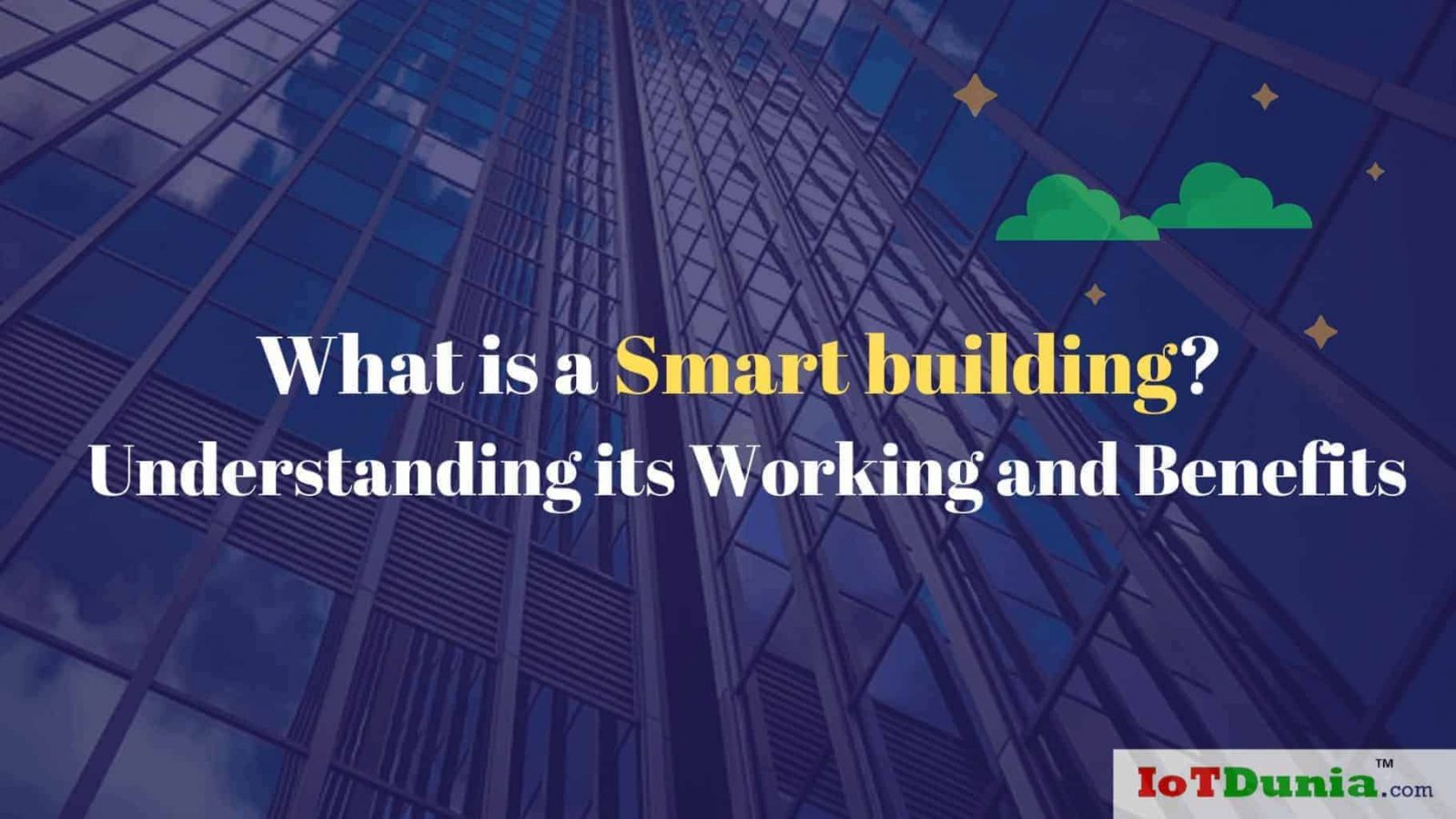What is Smart Building Technology? Benefits, Components & Use Cases
Introduction: What is a Smart Building?
A smart building—sometimes called an intelligent building—uses advanced digital technologies such as IoT (Internet of Things), sensors, AI (Artificial Intelligence), and automation to monitor, control, and optimize building operations. These technologies allow the various systems within a building—lighting, HVAC, security, power, and water—to interact intelligently with each other, significantly enhancing energy efficiency, occupant comfort, security, and operational productivity.
At its core, a smart building is a connected and responsive ecosystem that learns from user behavior and environmental conditions. Whether it’s a commercial office, shopping mall, hospital, university, or a modern smart home, smart buildings represent the future of building technology—enabling sustainable, data-driven decisions.
What is Building Technology in a Smart Context?
Building technology refers to the integration of infrastructure, automation, and digital systems that improve how buildings operate. In the smart context, this includes:
- IoT sensors for data collection
- Building Automation Systems (BAS) or Building Management Systems (BMS)
- Artificial Intelligence and Machine Learning
- Cloud platforms for centralized data control
- Mobile apps for occupants to interact with systems
With these technologies, buildings can monitor their own energy usage, adjust conditions in real-time based on occupancy, and automate essential functions like lighting, HVAC, and security.
How Does a Smart Building Work?
Smart buildings function by connecting physical systems through sensors and networked devices that gather, analyze, and respond to data.
Key Steps in a Smart Building Workflow:
- Sensor Integration: Sensors are placed throughout the building to collect real-time data on temperature, occupancy, lighting, air quality, water usage, etc.
- IoT Connectivity: These sensors are connected to the internet or a local network to enable communication with control systems.
- Building Automation: A central BAS/BMS receives this data and makes intelligent decisions—such as adjusting HVAC in empty rooms or reducing lighting in low-traffic areas.
- User Interaction: Occupants may use mobile apps (e.g., Comfy) to personalize their environment or view real-time room usage.
- Data Analytics and AI: Historical and real-time data are analyzed to optimize building performance, reduce energy costs, and predict maintenance needs.
Components of Smart Building Technology
Below are the core technologies and components that make a building “smart”:
1. IoT Devices and Sensors
Sensors are the foundation of smart buildings. They detect:
- Motion and occupancy
- Temperature and humidity
- Light intensity
- Water/gas leaks
- Air quality
- Vibration or equipment failure
2. Smart HVAC Systems
These systems adjust heating, ventilation, and air conditioning automatically based on occupancy and environmental data, reducing energy waste while improving comfort.
3. Smart Lighting
Lights are controlled based on natural light availability, occupancy, and user preferences. Smart bulbs reduce electricity use and can be remotely controlled.
4. Building Automation System (BAS)
The central nervous system that collects data from devices and controls building infrastructure.
5. Artificial Intelligence & Machine Learning
AI analyzes patterns in data and automates complex decisions, such as predictive maintenance or energy distribution.
6. Cloud & Edge Computing
Data collected from the building is processed and stored in the cloud, enabling remote access, monitoring, and control.
7. Building Information Modeling (BIM)
BIM provides a 3D model of the building with all digital systems integrated, allowing better design and facility management.
Benefits of Smart Building: Why Smart Buildings Matter
Here are the top benefits of smart buildings, especially when compared to conventional infrastructure:
1. Energy Efficiency and Sustainability
- Reduce energy consumption by monitoring usage patterns.
- Auto-shutdown of HVAC and lights in unoccupied areas.
- Support for renewable energy integration.
2. Cost Savings
- Real-time monitoring prevents wastage.
- Predictive maintenance reduces repair costs.
- Optimized asset usage lowers utility bills.
3. Occupant Comfort and Productivity
- Personalized settings for temperature and lighting.
- Better indoor air quality.
- Improved space utilization leads to fewer distractions.
4. Improved Security
- Smart access controls.
- Real-time video surveillance and emergency alerts.
- Fire alarms and gas leak sensors integrated with evacuation protocols.
5. Data-Driven Decision Making
- Facility managers access dashboards showing live data.
- Actionable insights improve space planning and operations.
6. Better Resource Management
- Optimize water usage, waste disposal, and utilities.
- Monitor indoor pollution levels and respond automatically.

Real-World Use Cases and Examples
KMC Controls
Offers complete IoT-based building automation—sensors, controllers, cloud processing, and dashboards.
Comfy App
Employees can personalize their workspace climate, view room availability, and adjust lighting using a mobile interface.
ABB & Samsung SmartThings Partnership
Cloud-to-cloud integration for unified control of lighting, appliances, energy, and security systems.
SmartViz + Nexer Insights
A digital twin platform providing predictive simulations and real-time building analytics to reduce emissions and enhance comfort.
Smart Parking Systems
Use IoT to detect available slots, guide users via apps, and manage toll collection and lighting based on vehicle presence.
Smart Building Use Cases by Domain
| Domain | Smart Building Application |
|---|---|
| Commercial Offices | Energy-efficient lighting, smart HVAC, occupancy tracking |
| Hospitals | Smart ventilation, real-time equipment monitoring |
| Schools & Universities | Automated attendance, environmental quality control |
| Malls | Smart parking, lighting control based on traffic |
| Hotels | Guest room automation, energy optimization during check-outs |
Smart Building Market Trends & Forecast
- The global smart building market is projected to reach $201.16 billion by 2031, growing at a CAGR of 11.3% (2022–2031).
- Growth drivers include:
- Rising demand for sustainability and energy efficiency.
- Urbanization and smart city initiatives.
- Declining cost of IoT devices and sensors.
- Government incentives for green buildings.
Future Trends in Smart Building Technology
- 5G Integration: Faster, more reliable communication between devices.
- Digital Twins: Simulations of real-time building behavior using BIM and IoT data.
- AI-Powered Predictive Maintenance: Automated diagnosis and repairs.
- Voice-Controlled Automation: Integration with assistants like Alexa or Google Home.
- Zero Energy Buildings (ZEB): Structures that generate as much energy as they consume.
Challenges of Smart Building Adoption
- High Initial Investment: Retrofitting existing buildings is expensive.
- Data Privacy & Cybersecurity: Risk of breaches from connected devices.
- Interoperability: Devices from different manufacturers may not integrate easily.
- Skill Gaps: Need for trained facility managers and IT staff.
See also: IoT in Manufacturing Industry: Industrial IoT Applications
Frequently Asked Questions (FAQs)
1. What is a smart building?
A smart building is a structure that uses connected technologies like IoT, automation systems, sensors, and artificial intelligence to monitor, control, and optimize various functions such as lighting, HVAC, energy use, and security. These technologies enable the building to operate more efficiently, provide enhanced comfort to occupants, and reduce operational costs.
2. How does smart building technology work?
Smart building technology works through the integration of IoT devices, automation systems, and cloud platforms. Sensors collect real-time data (e.g., temperature, occupancy, lighting), which is processed by a Building Management System (BMS) or Building Automation System (BAS). The system then makes automated adjustments or recommendations based on analytics, improving comfort and reducing energy consumption.
3. What are the key components of a smart building?
The major components of a smart building include:
- IoT Sensors (temperature, motion, air quality, occupancy)
- Smart HVAC and Lighting Systems
- Building Automation Systems (BAS)
- AI & Machine Learning Analytics
- Cloud and Edge Computing
- Mobile Apps for User Interaction
- Smart Parking and Security Systems
4. What are the benefits of smart buildings?
Key benefits of smart buildings include:
- Energy efficiency and cost savings
- Improved comfort and productivity for occupants
- Better building performance and maintenance
- Real-time monitoring and decision-making
- Enhanced safety and security
- Sustainability and environmental friendliness
5. Is it expensive to convert a traditional building into a smart building?
The initial cost of upgrading to smart building technology can be high due to infrastructure changes and device installations. However, the long-term savings from reduced energy bills, predictive maintenance, and operational efficiency often outweigh the upfront investment. Many organizations experience a strong ROI within 2–5 years.
6. What is the role of IoT in smart buildings?
IoT (Internet of Things) acts as the backbone of smart buildings. It connects various sensors and devices, allowing them to communicate, collect data, and trigger automated responses. From smart lighting to predictive maintenance alerts, IoT helps in optimizing the building’s performance in real-time.
7. Can smart buildings help reduce carbon emissions?
Yes. Smart buildings significantly contribute to sustainability and climate goals by minimizing energy waste, optimizing resource usage, and integrating renewable energy sources. Real-time data monitoring helps in tracking and reducing carbon footprints, making buildings more environmentally friendly.
8. Are smart buildings secure from cyber threats?
While smart buildings offer many benefits, they are also susceptible to cybersecurity risks due to the connected nature of IoT devices and cloud platforms. It is essential to implement strong security practices, such as encrypted communication, secure firmware updates, firewalls, and multi-factor authentication to protect building systems and occupant data.
9. What are some real-life examples of smart buildings?
Examples include:
- Smart offices with automated climate and lighting controls
- Hospitals using smart air filtration and monitoring systems
- Shopping malls with IoT-enabled parking and energy tracking
- Hotels offering room automation and smart concierge services
- Smart campuses in universities managing lights, labs, and access digitally
10. What is the future of smart building technology?
The future of smart buildings lies in AI-powered digital twins, zero-energy buildings, 5G IoT integration, and voice-controlled automation. These innovations will make buildings more intelligent, responsive, and sustainable, shaping the cities of tomorrow.
See also: Top IoT Applications in Real World – Smart Use Cases 2025
Conclusion: Why Smart Buildings are the Future
Smart buildings combine human intelligence, IT infrastructure, and digital automation to create responsive, energy-efficient, and safer living and working spaces. With IoT and building technology at the center, these infrastructures promise not only cost savings and sustainability but also enhanced comfort and control.
Whether you are a facility manager, real estate developer, or a tech enthusiast, adopting smart building solutions today means investing in a greener, smarter, and more connected tomorrow.
Ready to Explore More? Let’s Build Smarter Together!
🔔 Subscribe to Our YouTube Channel » for IoT video Tutorials.
🌐 Start Learning IoT Basics Now » and What is IoT? – Introduction to IoT and IoT Architecture: 4 Essential IoT Layers Simplified for Beginners on IoTDunia.com! and Check out Top IoT Applications in Real World – Smart Use Cases 2025, IoT career guide 2025, Best Projects on IoT for Beginners
👉 Have questions? Drop them in the comments!
💡 Start small, stay curious, and make your world smarter—one device at a time.










Leave a Review